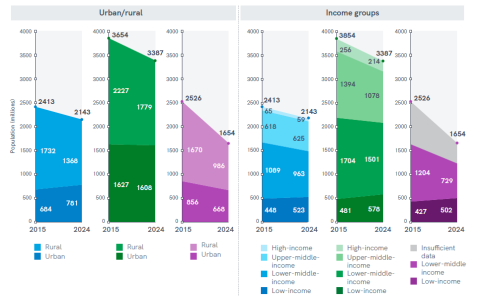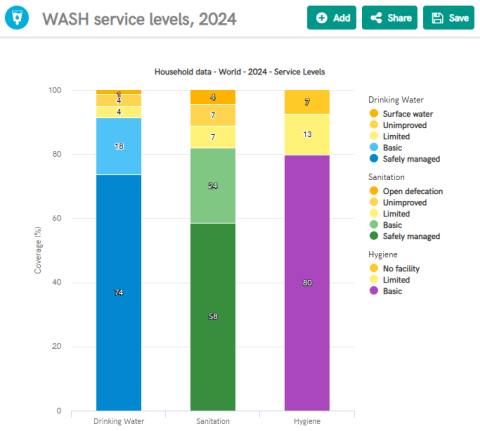
This data-driven JMP progress report presents global trends in household drinking water, sanitation, hygiene, and menstrual health from 2000 to 2024. It tracks progress toward SDG targets and highlights persistent inequalities across regions, income groups, and demographic characteristics. The report incorporates expanded datasets and new indicators, offering clearer insights into service disparities, fragile contexts, and menstrual health needs.
Between 2000 and 2024, the global population rose from 6.2 to 8.2 billion. Over this period, about a quarter of the population (2.2 billion) gained access to safely managed drinking water and a third (2.8 billion) to safely managed sanitation. Yet progress has been uneven and the number of people left behind has fallen more slowly. Since 2015, the distribution of the unserved has shifted: the proportion of the population with sanitation services has risen quickly in rural areas while staying relatively flat in urban areas. However, in terms of raw numbers most of the gains have been realized in urban areas. Basic hygiene access has improved, especially in rural areas; and the share of people unserved has increasingly concentrated in low-income countries.


